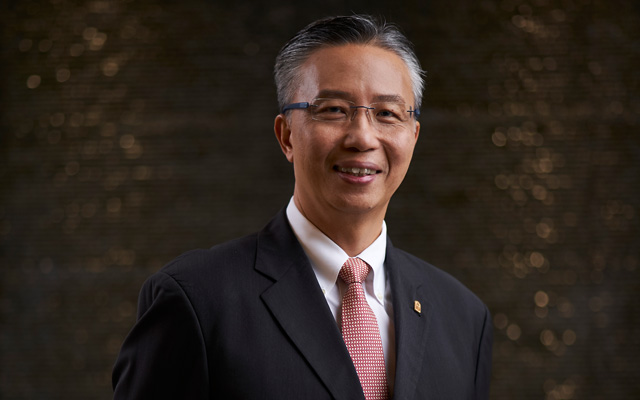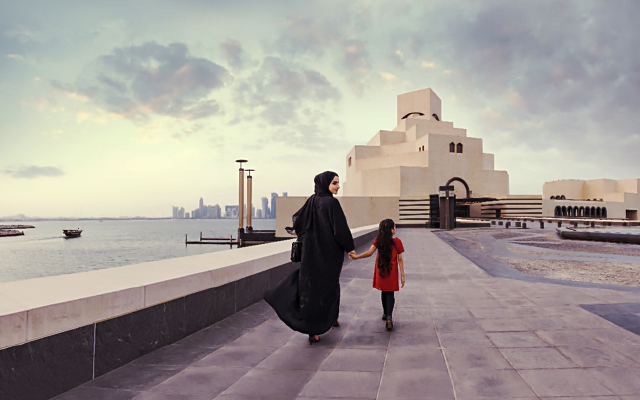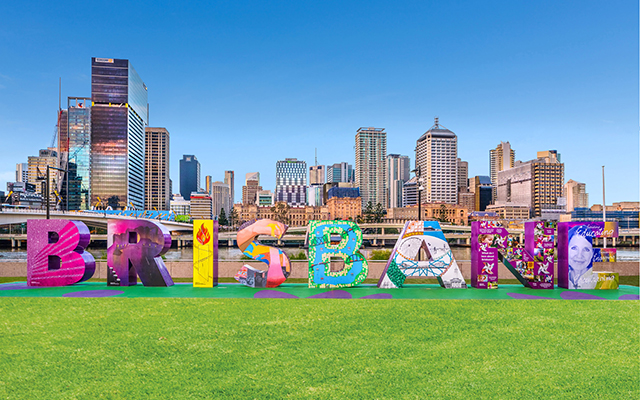Pan Pacific Hotels Group barely has time to sit still – its portfolio is expanding quickly, its brands are being transformed to the next level, and a major research is underway to evolve its operations for the better, shares CEO Choe Peng Sum
 You were one of my first few in-person interviewees when Singapore eased restrictions on group gatherings in 2020. I remember our conversation then was a lot about how the Pan Pacific Hotels Group (PPHG) leadership had to focus on rallying the team. What is the leadership’s focus these days?
You were one of my first few in-person interviewees when Singapore eased restrictions on group gatherings in 2020. I remember our conversation then was a lot about how the Pan Pacific Hotels Group (PPHG) leadership had to focus on rallying the team. What is the leadership’s focus these days?
Our focus is now on going forward with growth, repositioning, and culture-building.
First, portfolio growth. Efforts started at the tail-end of 2021, when we opened in London (with Pan Pacific London) and then onwards to Kuala Lumpur (with Parkroyal Collection Kuala Lumpur and Pan Pacific Serviced Suites Kuala Lumpur), Singapore (with Pan Pacific Orchard), and Japan (with Bellustar Tokyo, A Pan Pacific Hotel, and Hotel Groove Shinjuku, A Parkroyal Hotel). We are going into Kyoto and Sapporo soon.
It has so far been a great, great time for the company.
Second, repositioning. We are moving the Pan Pacific brand into version two. This started with the opening of Pan Pacific London and the new positioning is carried through the other Pan Pacific hotels and serviced suites that followed. All the older Pan Pacific properties are also being renovated so they become version two as well.
We are working to reposition our Parkroyal brand too, sharpening its sustainability advantage and placing it in the 4.5-star category with a strong social-local offering. The newly-renovated Parkroyal on Beach Road (in Singapore), is one example, as celebrates the cultural vibrancy of nearby Haji Lane (a trendy enclave within a neighbourhood steeped in Muslim heritage).
Next, we are committing a lot more to nurturing a positive service culture. Any hotel can compete on hardware, but it is service that sets one apart from the others.
Studies on consumer travel intentions post-lockdown are showing continued appetite for travel. What trends in travel are most impressive for you, and how is PPHG responding to these opportunities?
Travellers now want to experience everything – the hotel as well as the destination. People have also become super aware of the environment and have a greater appreciation of the environment, nature, and the outdoors. Furthermore, there is heightened attention to personalisation and loyalty, which relates to the importance people now place on experiences.
I will elaborate. Let’s start with experience – the hotel and hotel room have to be very good because competition has given people so many options. When they leave their room, the hotel lounge, restaurants and bars must also deliver a great experience and service journey, beyond the food or drink that is served.
Next, sustainability. This is more than just removing straws and replacing plastic bottles or single use plastic. It’s very, very expensive to be a sustainable hotel. Look at these sets of double-glazed glass walls (that envelope the Club Lounge at Parkroyal Collection Marina Bay). We did not need to replace the original glass façade of this building when we took over and rebranded it, but we did and spent millions of dollars in the process. Why? These double-glazed glass walls keep the cold air from leaking out and hot air from coming in. That saves us so much in electricity from air-conditioning.
Behind the scenes, we have heat exchangers in all our properties. They draw hot air from our chillers and use it to boil our water to 60 degrees Celsius, so that our boiler systems only need to kick in from mid-way to take our water up to boiling point. Imagine how much energy that saves.
We keep up our sustainability commitment even though our guests do not see these features in action.
However, there are opportunities for our guests to learn about what we do. Here at Parkroyal Collection Marina Bay is an extensive food sustainability movement. The team has done a brilliant job conducting sustainability tours and talks for hotel guests and other organisations. These tours are fully booked all the time.
Now, about guest loyalty – we need to know why guests are coming back and what we need to do to make them feel like they are returning home whenever they do. For this, we need to understand our guests, track their behaviours and build their experience. Our digital unit is committed to data mining and testing out all the different ways of communicating with our guests.
The new properties that have come out in recent years boast some form of biophilic features. Are your brands and PPHG’s reputation now associated with being green and sustainable?
Yes, we are indeed capturing the attention of the sustainability-focused traveller market.
We want to push our boundaries. We could very well just do a square-box hotel, but why should we? We want to be a hotel that isn’t quite a hotel. I wouldn’t use the word blue ocean but (we should not do) the usual things that hotels typically do.
I’ve been telling the team ad nauseam that PPHG is different.
Let’s talk more about the Pan Pacific brand. I used to see it as a luxury brand belonging to my parents’ generation, where luxury is defined by suits and sombre service, and everyone is prim and proper. But, Pan Pacific Orchard changed that for me – the architecture, the interior aesthetics, all that greenery, and the stylish dining concepts within speak to the young generation that values quality without too much stuffiness. How do you personally see the Pan Pacific brand evolving, and what lies ahead?
I totally agree with what you say.
A few years ago, when I joined the company, I saw Pan Pacific Singapore, with 800 rooms and two ballrooms, as the typical convention hotel. But, I thought, why should it be? Now, after an extensive renovation, the hotel feels almost like a boutique hotel – it does not feel huge like your typical convention hotel, although it is; instead, there are many private spots where you could enjoy time alone.
Over at the newly-opened Pan Pacific Orchard, the architecture recreates a verdant sanctuary with four themes – Forest, Beach, Garden and Cloud – and within each you can find plenty of personal spaces.
So, it was with a sense of space that we developed our future portfolio of Pan Pacific properties.
Your branding team recently defined Pan Pacific Hotels and Resorts’ new ambition as Graceful Luxury. What does this mean?
We are not a luxury brand that is represented by having the best marble, although we do have some very nice ones, or the largest crystal chandeliers. We want to highlight a luxury that is graceful and from the heart.
We are able to convey this promise through Pan Pacific London, where we showed what attentive Asian graceful luxury is to the UK and European markets.
In London, we compete with brands like Rosewood, and the city has all the luxury hospitality that you could possibly find. And yet, with our Asian style of graceful luxury service, we earned the Forbes Travel Guide’s Five Star Award within five months of opening. We did not win just because we have a beautiful building and stunning interiors – although we did get the best – Yabu Pushelberg and PLP Architecture from New York – to design and build it. Forbes judges saw our people first, offering a welcome at the door, at the restaurant, etc.
There is, however, a challenge to delivering (such high service standards) in some places due to labour shortages and cost concerns. Singapore is an example. Although average room rates have risen and occupancy has been good, costs have gone up substantially.
So, how do we still deliver on our promise of graceful luxury here in Singapore? Let me give you an example of how it can be done – Melvin Lim, general manager of Parkroyal Collection Marina Bay, Singapore (he has since taken over the helm at Pan Pacific Singapore). He has one of the best staff retention rates in the hotel industry here. Does that mean he is a very soft leader? Not at all. He’s got very high standards, yet his team loves to work with him. You need a nurturing work environment for staff to present genuine hospitality to their guests.
Well, there is still a lot of things that we can do better. I’d like the welcome at Pan Pacific Singapore to be a lot warmer, for instance. So, I spot the best people and move them around. Melvin will lead Pan Pacific Singapore and work his magic there, while Phil (Smith) who has done a splendid job at Parkroyal Collection Pickering, will move to Parkroyal Collection Marina Bay to take it even further.
Quality hospitality requires a certain culture – one that welcomes everyone’s feedback and open interaction, one that is lively and fun.
To build that sort of culture you need leaders who share the same vision and who can inspire fellowship. How do you identify such leaders?
Leaders are indeed so important, Karen, but we don’t always get it right. We may hire people with immaculate CVs, but after a while we may realise that they crack the whip a little too much and too often. That drives immediate performance, but affects staff motivation in the longer term.
We are very clear about our vision, and about building a good work culture alongside very high business standards.
If the leader does not fit our vision and culture, we have to make tough decisions.
With a view towards even better business performance while doing right by our people, we are making some massive leadership changes. We are rotating our property leaders, like Melvin and Phil as mentioned earlier.
When we came out of the pandemic in 2022, we were S$120 million (US$88 million) above budget. I believe it was largely due to our staff feeling that they own the business.
All our restaurants across all our properties offer profit sharing and team incentives. They can make 40 per cent above their income. Because of this structure, our staff take pride in knowing how well daily business is and are very enthusiastic about doing their best to impress their guests. They get worried when the day is slow.
Other departments have their own incentives.
When we first introduced this practice of profit sharing, some warned that we were starting something dangerous, something we might regret later. The F&B industry has a very high staff turnover, yet we have one of the lowest rates.
I have 6,000 staff across the world. If every one of them feel that they own the business, I can sleep well at night.
Let’s get back to your point about managing costs and manpower while delivering quality guest experiences. Besides having leaders with foresight, what else must be in place?
We have recently engaged human resource experts, Mercer, to work with us on developing a vision of the hotel of the future. This is a million-dollar exercise that will look deeply into how things can be done better at hotels through practical multitasking.
Through three beta-test hotels, Mercer will investigate all work processes across various departments, from housekeeping to front office, and take into considerations factors like available resources.
Let’s take housekeeping as an example. It is a job that Singaporeans shun, and labour is scarce. It is not unusual to have one housekeeper handling 14 to 15 guestrooms. The mistake hotels tend to make is forcing one housekeeper to do 20 rooms due to cost-cutting measures. It is highly impossible, and the outcome is a rushed job. The hotel may achieve its objectives of clearing more rooms with fewer staff, but guests are affected.
So, Mercer, through its study of our housekeeping operations, discovered that cleaning the beds and bathroom take up the most time, require the most strength, and pose most health risks to the housekeepers. A possible change in this process is to have two different teams to clear rooms – one in hygiene suits just to strip the beds and bathroom linens, and another to clean and put everything nicely together. The linens will be RFID-tagged and tossed down the laundry chute for washing and later separation by automation – this saves time.
We are also looking into more advanced vacuum cleaners, better cleaning cloths that can get the job done in half the time, and mechanised housekeeper trolleys that are less strenuous to move and can be linked to a software that sequences and prioritises rooms that must be cleared first.
So many possible improvements to just one department!
















